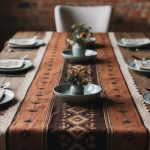Classic Style Revamp: Key Furniture Pieces You Should Own
The Role of Customization
Customization plays a critical role in modern interiors, allowing individuals to transform classic furniture styles into unique showpieces. Through tailored options and personalized creations, furniture can reflect personal tastes and requirements, enhancing both form and function.
Tailored Furniture Options
Tailored furniture offers a unique method for achieving personalized aesthetics. These pieces can be adjusted in dimensions, materials, and finishes to suit specific needs. Professionals in furniture design often provide options for customizing items like sofas, chairs, and tables. Homeowners can choose from an array of fabrics, colors, and styles, ensuring that the furniture complements existing decor.
The ability to incorporate specialized features, such as storage solutions or adjustability, adds practical benefits. These tailored elements can significantly enhance the appeal of classic styles, giving them a fresh and contemporary look. This approach not only elevates the visual appeal but also increases the functionality of classic design, offering both style and convenience for any home setting.
Personalizing Your Space
Personalization transforms a house into a home by reflecting individual personalities and preferences. Personalized furniture lets users select specific design attributes, perhaps inspired by travel experiences or cherished memories. Incorporating unique details like monograms or custom embroidery can make pieces distinctively yours.
Personalized spaces often feel more inviting and intimate, as they capture the essence of the inhabitant’s tastes. By choosing customized furniture, individuals can create an environment that is not only visually pleasing but also functionally adept in meeting their lifestyle needs. Personalized advertising in this realm helps customers discover offerings that align perfectly with their vision, making the process intuitive and enjoyable.
Achieving a Cohesive Look
Establishing a cohesive look in interiors involves careful consideration of color schemes, patterns, and the integration of different styles and periods. Effective space planning ensures that each element works harmoniously within the room.
Color Schemes and Patterns
Colors and patterns play a crucial role in creating a cohesive interior design. Selecting a unifying color palette connects various elements of a room, creating visual harmony. Consistency is important, so all elements like walls, furniture, and artwork should incorporate these colors in various shades.
Patterns should complement the color scheme and contribute to the overall theme. For example, choosing a dominant pattern for a large area rug or wallpaper, while using more subtle patterns for accents, ensures balance. Mixing patterns involves some risk, but keeping a consistent color choice makes it successful.
Mixing Styles and Periods
Combining styles and periods can result in an engaging interior, if done thoughtfully. Selecting cornerstone pieces from different eras while maintaining a consistent color palette encourages cohesiveness. For instance, pairing a mid-century modern chair with a classic Victorian table can create a refreshing contrast.
Maintaining aesthetic balance matters when mixing styles. If one chooses ornate period furniture, it’s wise to balance it with simpler, more modern pieces to avoid overwhelming the space. Similarly, incorporating a mix of materials such as wood, metal, and glass can add depth without disrupting unity.
Space Planning and Layout
Efficient space planning and layout are fundamental in achieving cohesion in interiors. Each piece of furniture should be both functional and visually compatible with the surroundings. Practical arrangements, such as creating a focal point, like a fireplace or an artwork piece, guide the eye and enhance flow.
It’s important to consider room proportions and traffic patterns. Ensuring that pathways are unobstructed facilitates movement and makes the space inviting. Thoughtful placement of furniture can emphasize specific design elements and create an organized room feel. Balancing open and filled spaces prevents a cluttered appearance and sustains the cohesive look.



